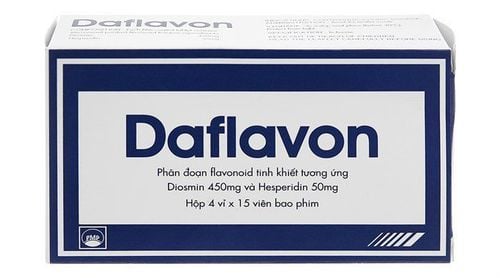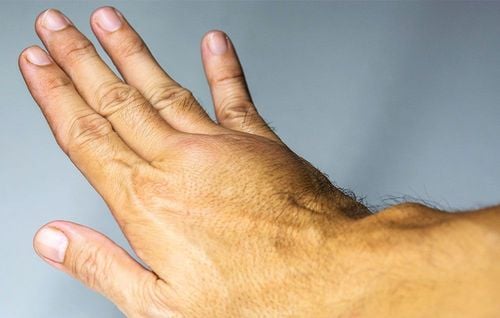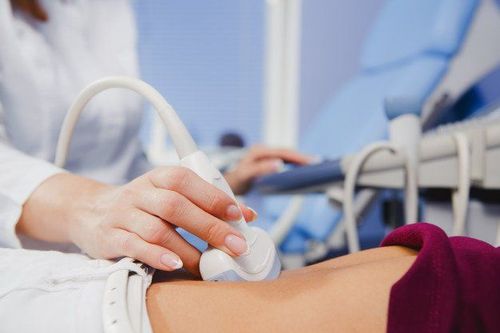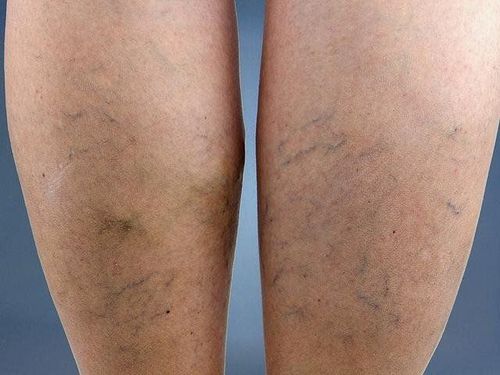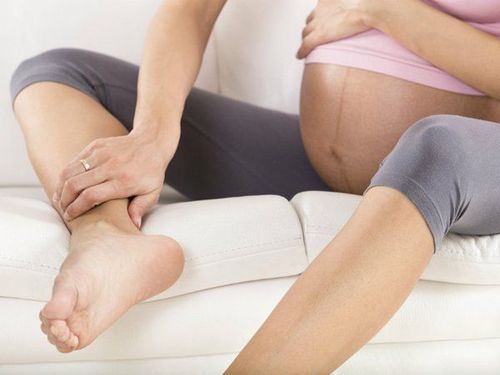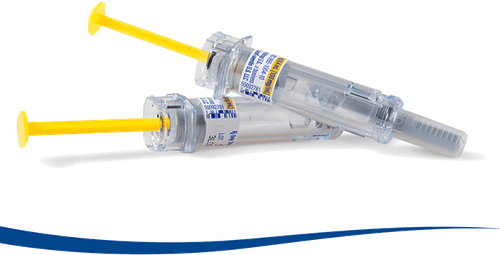This is an automatically translated article.
The article is professionally consulted by Master, Doctor Le Xuan Thiep - Radiologist - Department of Diagnostic Imaging - Vinmec Ha Long International General Hospital. The doctor has extensive experience in the field of diagnostic imaging.Venous insufficiency or venous insufficiency is the loss of function of the venous valves (due to injury or simply varicose veins) the valves of the veins that function to help blood flow in the veins only. one-way (from the periphery to the heart) in any position, but these valves can be damaged or due to varicose veins leading to these valves not being closed => blood backflowing through the valve => Blood stagnation => formation of thrombus at the valves, in the veins. (of the veins is weakened, the ability to push blood back to the heart decreases, causing blood stasis causing varicose veins). To diagnose venous insufficiency, doctors may assign patients to use venous ultrasound.
1. What is venous insufficiency?
Venous insufficiency is a condition in which the veins (most commonly in the legs) are no longer able to pump blood back to the heart. This causes the flow to stagnate, causing blood to pool in the walls of the vessels, causing the veins to dilate over time.Physiologically, blood flows from the heart to the legs through the arteries and back to the heart through the veins. In order for blood to flow back to the heart, the veins need the support of a system of muscles and a network of one-way valves. If the muscles and one-way valves are weak or no longer working, it will cause blood stagnation in the veins, reducing blood flow to the heart.
Symptoms of venous insufficiency include:
Twisted and swollen veins Skin that turns dark purple or blue Swelling, itching, pain, burning in the leg area and muscle cramps Feeling of heaviness and fatigue in the legs Changes in skin color Stretching Varicose veins are blood vessels on the surface of the skin that become enlarged and twisted. It can occur all over the veins, but is most common in the veins of the legs. Varicose veins are different from spider veins and very small blue/purple veins close to the surface of the skin that appear on the legs and face. Spider veins do not cause the same pain as varicose veins, but cause greater cosmetic concern (the Venous Pathology Foundation considers them a venous disorder).
Risk factors for venous insufficiency include:
Family history Pregnancy and other health conditions that cause increased pressure on veins in the legs History of blood clots History of smoking Standing or sitting for long periods of time Long Overweight, which increases pressure on the legs Menopause Aging, leading to decreased elasticity of blood vessels Weak blood vessel walls Phlebitis Chronic constipation, more rarely tumors

Người bệnh thừa cân làm tăng áp lực lên chân có thể gây suy tĩnh mạch
Pain Inflammation and swelling Skin ulcers Bleeding when veins near the surface of the skin burst Blood clots, which can lead to deep vein thrombosis, Superficial vein thrombosis is a condition in which the superficial veins (near the skin) in the legs become tender, inflamed, string-like
2. How is venous insufficiency assessed?
Initially, the patient is clinically examined by asking for medical history, symptoms, and performing physical exams.Venous ultrasound, in which mainly lower extremity vascular ultrasound, is necessary to confirm the diagnosis of the disease. It helps to observe the functioning of the venous valves and look for blood clots.
3. How is venous insufficiency treated?
Varicose veins can be prevented by making lifestyle changes. In which, mainly do the following measures:Elevate the legs while sitting or sleeping Wear medical socks Avoid standing for a long time Lose weight Exercise to improve leg strength

Tập luyện thể dục và giảm cân giúp hỗ trợ điều trị bệnh suy tĩnh mạch
Sclerotherapy : Sclerotherapy is performed using by injecting a special solution directly into a vein that causes the vessel to constrict and eventually disappear. For larger veins, foam sclerotherapy will be applied to close and seal the weakened vein. Treatment of varicose veins with radiofrequency or laser: An ultrasound-guided procedure that uses high-frequency or laser energy to heat and seal the varicose veins. An ultrasound helps to visualize the location of the vein, allowing the doctor to thread a laser fiber or radiofrequency wave through a catheter into the vein. This method uses heat to remove already weakened veins. Phlebectomy: A phlebectomy surgery uses a small scalpel or needle to remove varicose veins on the surface of the leg through small incisions in the skin. Stripping Surgery: Similar to phlebectomy, stripping is also a surgical method of cutting veins. It is performed under general anesthesia to remove the entire superficial vein in the leg. Due to advances in minimally invasive surgery, this method is increasingly rarely used. Venous insufficiency progresses slowly in its early stages, making it difficult for patients to recognize symptoms. Therefore, people with high risk factors for the disease should pay attention to any symptoms of the disease and should go to reputable medical facilities for early examination and treatment to avoid complications of the disease. happen.
At Vinmec International General Hospital, there is currently examination, diagnosis, symptom recognition, ultrasound diagnosis and treatment of venous insufficiency. In addition, to improve service quality, Vinmec also deploys a package of lower extremity varicose veins examination to help customers with symptoms of the disease receive an in-depth examination to determine the condition of the disease.
Please dial HOTLINE for more information or register for an appointment HERE. Download MyVinmec app to make appointments faster and to manage your bookings easily.
Reference source: radiologyinfo.org




